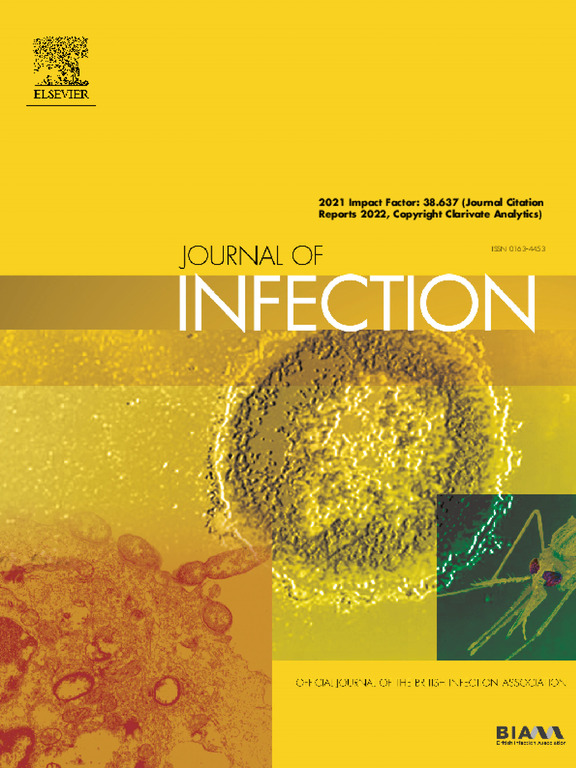法国2023-2024年非典型暴发期间分离的细小病毒B19的病毒学特征
IF 14.3
1区 医学
Q1 INFECTIOUS DISEASES
引用次数: 0
摘要
背景:据报道,欧洲在2023-2024年爆发了细小病毒B19 (B19V)。本研究的目的是:1)描述法国某医院2012 - 2024年B19V的发病情况;2)分析2023株B19V的基因组;3)根据B19V感染的临床表现确定病毒学特征。方法:采用中断时间序列分析方法对B19V原发病例的发生率进行研究。在NS1-VP1u区对2023株进行了基因组测序。采用Kruskal-Wallis试验和基于k近邻的机器学习方法,根据临床表现分析158例患者的血液病毒载量、IgG和IgM水平。结果:在2023-2024年B19V暴发期间,B19V感染发生率比大流行前增加了8倍(8.25 (95%CI: 5.79 ~ 11.76))。2023株属于1a基因型,与2019年前的菌株密切相关。结论:2023-24年的流行可能是由于2019年前的毒株再次出现所致。本研究强调的病毒学特征有助于准确解释病毒学结果。本文章由计算机程序翻译,如有差异,请以英文原文为准。
Virological characterization of Parvovirus B19 isolated during the atypical 2023-2024 outbreak in France
Background
A Parvovirus B19 (B19V) outbreak has been reported in Europe in 2023–2024. The aims of this study were 1) to describe the incidence of primary cases from 2012 to 2024 in one French hospital 2) to analyze the genome of 2023 strains 3) to identify virological profiles according to the clinical presentations of B19V infection.
Methods
The incidence of B19V primary cases was studied through an interrupted time-series analysis. Genomes of 2023 strains were sequenced in the NS1-VP1u region. Blood viral loads, IgG and IgM levels were analyzed in 158 cases according to clinical manifestations with Kruskal-Wallis test and a machine learning approach based on k-nearest neighbors.
Results
During the 2023–2024 B19V outbreak, there was an 8-time increase in the incidence of B19V infections compared with pre-pandemic levels (8.25 (95%CI: 5.79–11.76)). The 2023 strains belonged to genotype 1a and were closely related to pre-2019 strains. Blood viral loads were significantly different between clinical presentations (p<0.0001). Machine learning allowed us to classify 68.8% (95% CI: 60.9–75.9) patients into the correct clinical group.
Conclusions
The 2023–24 epidemic is probably due to the reemergence of the pre-2019 strain. The virological profiles highlighted in this study could assist in accurately interpreting virology results.
求助全文
通过发布文献求助,成功后即可免费获取论文全文。
去求助
来源期刊

Journal of Infection
医学-传染病学
CiteScore
45.90
自引率
3.20%
发文量
475
审稿时长
16 days
期刊介绍:
The Journal of Infection publishes original papers on all aspects of infection - clinical, microbiological and epidemiological. The Journal seeks to bring together knowledge from all specialties involved in infection research and clinical practice, and present the best work in the ever-changing field of infection.
Each issue brings you Editorials that describe current or controversial topics of interest, high quality Reviews to keep you in touch with the latest developments in specific fields of interest, an Epidemiology section reporting studies in the hospital and the general community, and a lively correspondence section.
 求助内容:
求助内容: 应助结果提醒方式:
应助结果提醒方式:


